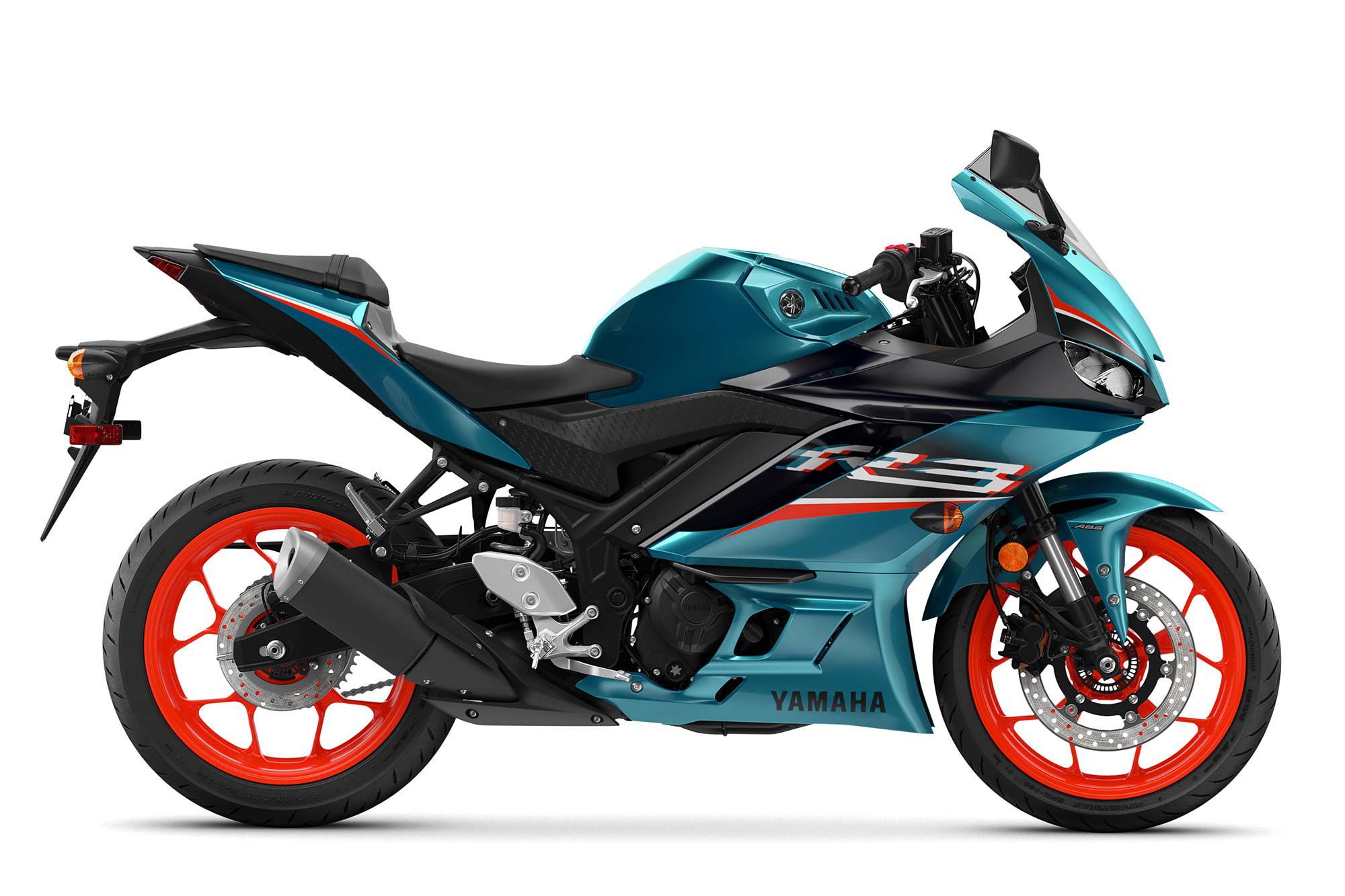
Ups
- Small size, amiable manners for new riders
- Revvy engine, good handling for experts
Downs
- Needs slightly bigger engine to compete with rivals
- $300 price increase
Verdict
The R3′s debut six years ago changed the entry-level motorcycle landscape, and it remains a bike that will please both beginner and expert rider alike. But competing with the Ninja 400 is a tough sell, especially with the Yamaha’s MSRP increase that now matches the Kawasaki’s price.
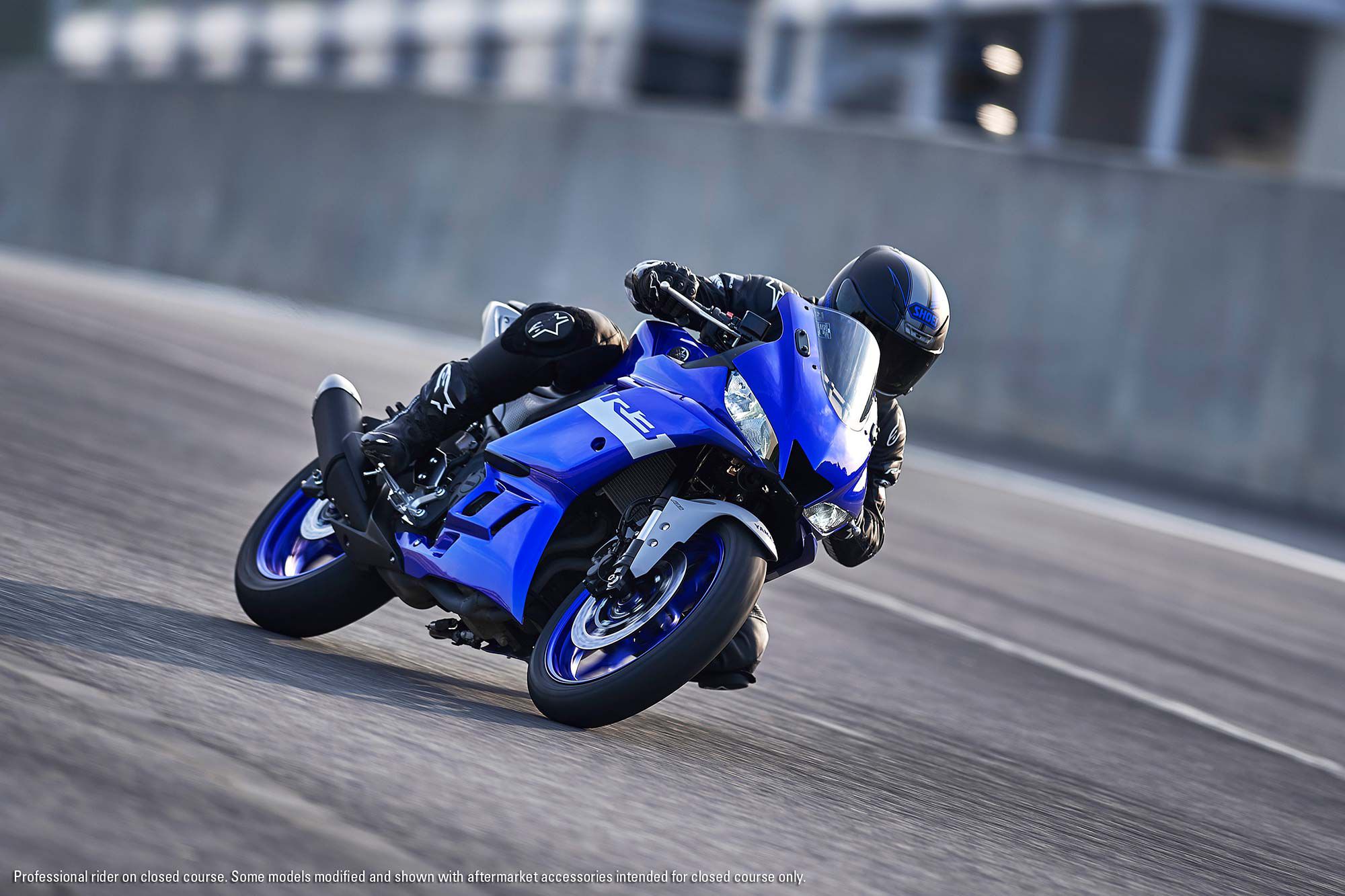
Overview
An instant sales hit when it debuted in 2015, the R3 received some upgrades in 2019, including new suspension and tires that further sharpened its sportbike focus without hurting the Yamaha’s easy-to-use character that endears it to entry-level riders. The quick-revving parallel-twin engine and well-sorted chassis can make quick work of curving pavement, while the short first gear, feather-effort clutch, and low seat height ease the learning process for novices. It’s no surprise the R3 is one of the best-selling models in Yamaha USA’s catalog.
Updates for 2021
There are no updates for 2021 to the Yamaha YZF-R3. Available colorways are Team Yamaha Blue, Matte Raven Black, and Electric Teal.
Pricing and Variants
The 2021 Yamaha YZF-R3 retails for $5,299. A special Monster Energy Yamaha MotoGP Edition with replica graphics from the factory Yamaha MotoGP YZR-M1 is available for $5,599.
Competition
The Yamaha R3′s main competitors are the Honda CBR300R, Kawasaki Ninja 400, KTM RC 390, and Suzuki GSX250R. Other possible alternatives are the BMW G 310 R, Honda CB300R, Kawasaki Z400, KTM 390 Duke, and Yamaha’s own MT-03.
Check out a comparison between the Yamaha R3 and Kawasaki Ninja 400 here.
Powertrain: Engine, Transmission, and Performance
The Yamaha’s 321cc parallel-twin engine obviously doesn’t have an abundance of power, with a peak of 36 hp at 10,700 rpm and torque peak of 19.8 pound-feet at 9,000 rpm measured on the CW dyno. But it’s certainly adequate for the vast majority of situations someone will encounter on the street, with smooth throttle response and friendly clutch feel that allows new riders to quickly get away from stoplights and handle traffic with ease. Passing on the highway will require a couple of downshifts, however, as there’s not enough midrange power to pull through the tall sixth gear.
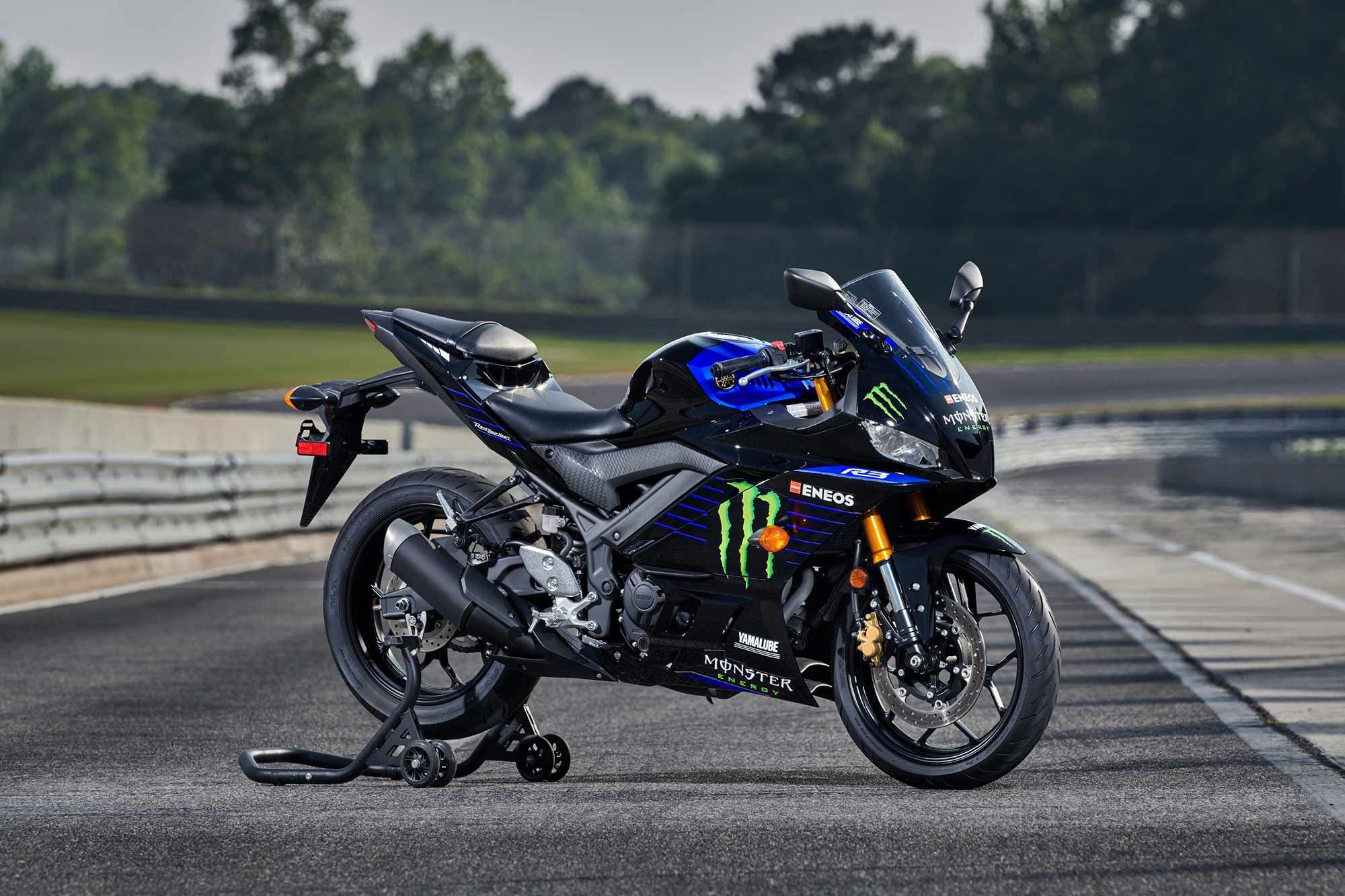
Handling
The suspension upgrades in 2019 included a new inverted 37mm KYB fork with stiffer spring, rebound and compression damping rates, plus stiffer spring and rebound damping rates in the rear KYB shock. These changes, along with the switch to Dunlop GPR-300 tires as standard fitment, have markedly improved the R3′s cornering capabilities, providing excellent control and agility. The trade-off is a slightly harsher ride over bumps in the city, but it’s a worthy compromise.
Brakes
Although the brake hardware is the same, it’s obvious that the brake pad compound was changed with the 2019 upgrade, as the feel and power is vastly improved. ABS is standard equipment with the Yamaha R3.
Fuel Economy and Real-World MPG
During CW’s comparison test with the R3 and Kawasaki Ninja 400, the Yamaha achieved an average of 43.4 mpg.
Ergonomics: Comfort and Utility
The 2019 upgrades included some incremental changes to the R3′s ergonomics, with the clip-on bars lowered 22mm and fuel tank shaped altered for better leverage in the turns. While it sounds like this would make it uncomfortable for extended rides, Kent Kunitsugu found no issue with the riding position even after more than an hour in the saddle on the highway in his CW First Ride Review story of the 2019 model. The tiny, thinly padded passenger seat won’t receive the same praise.
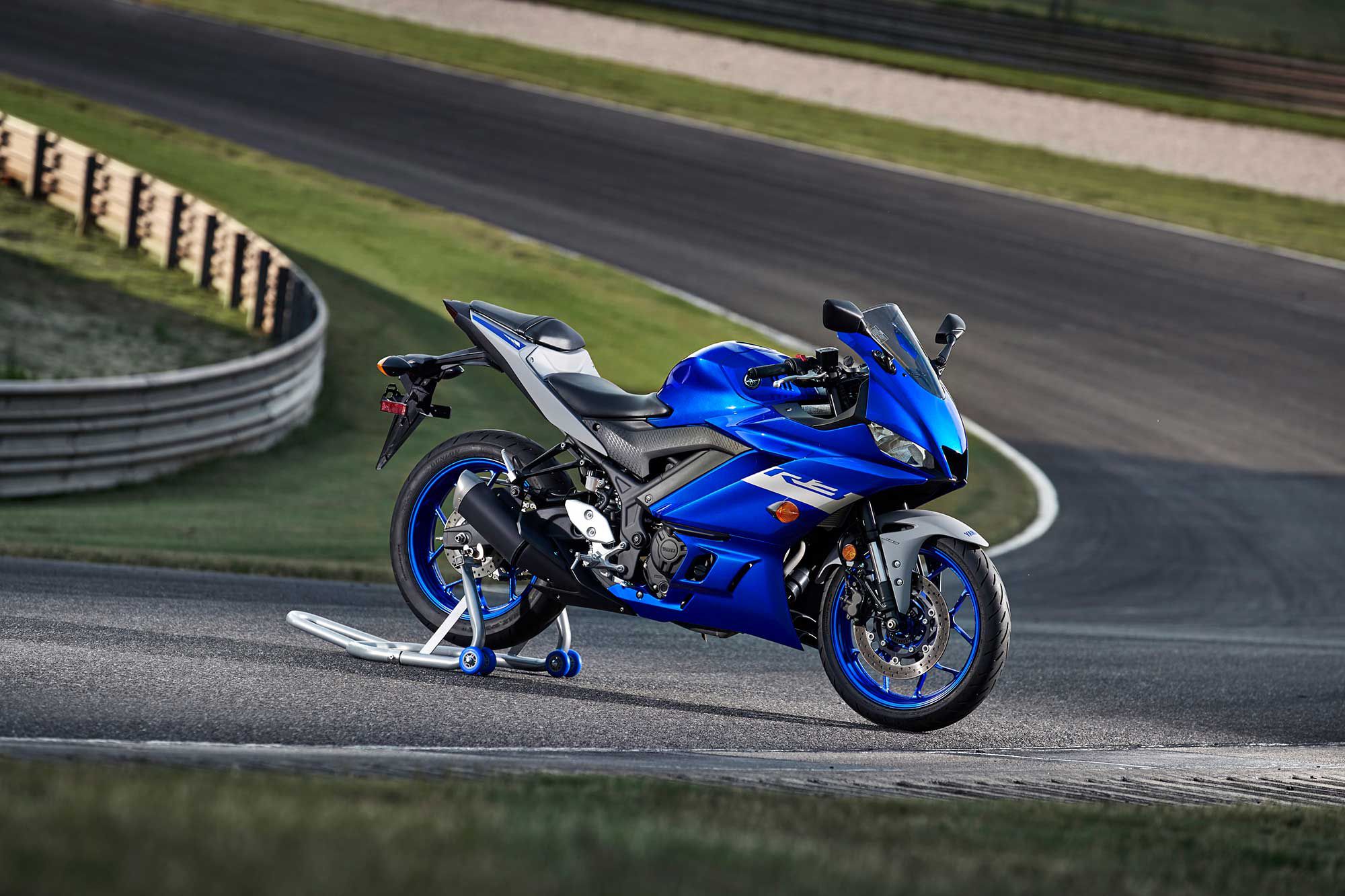
Electronics
In order to keep costs down, the Yamaha R3 is devoid of any electronic rider aids or ride modes, save for ABS. The 2019 upgrades included LED headlights/taillights, but the dashboard info is still an old-school LCD panel.
Warranty and Maintenance Coverage
The Yamaha YZF-R3 comes with Yamaha’s one-year limited warranty, with extended warranty and benefits available through Yamaha Extended Service.
Quality
Fit and finish on the Yamaha R3 is excellent, especially for a bike in this price range.
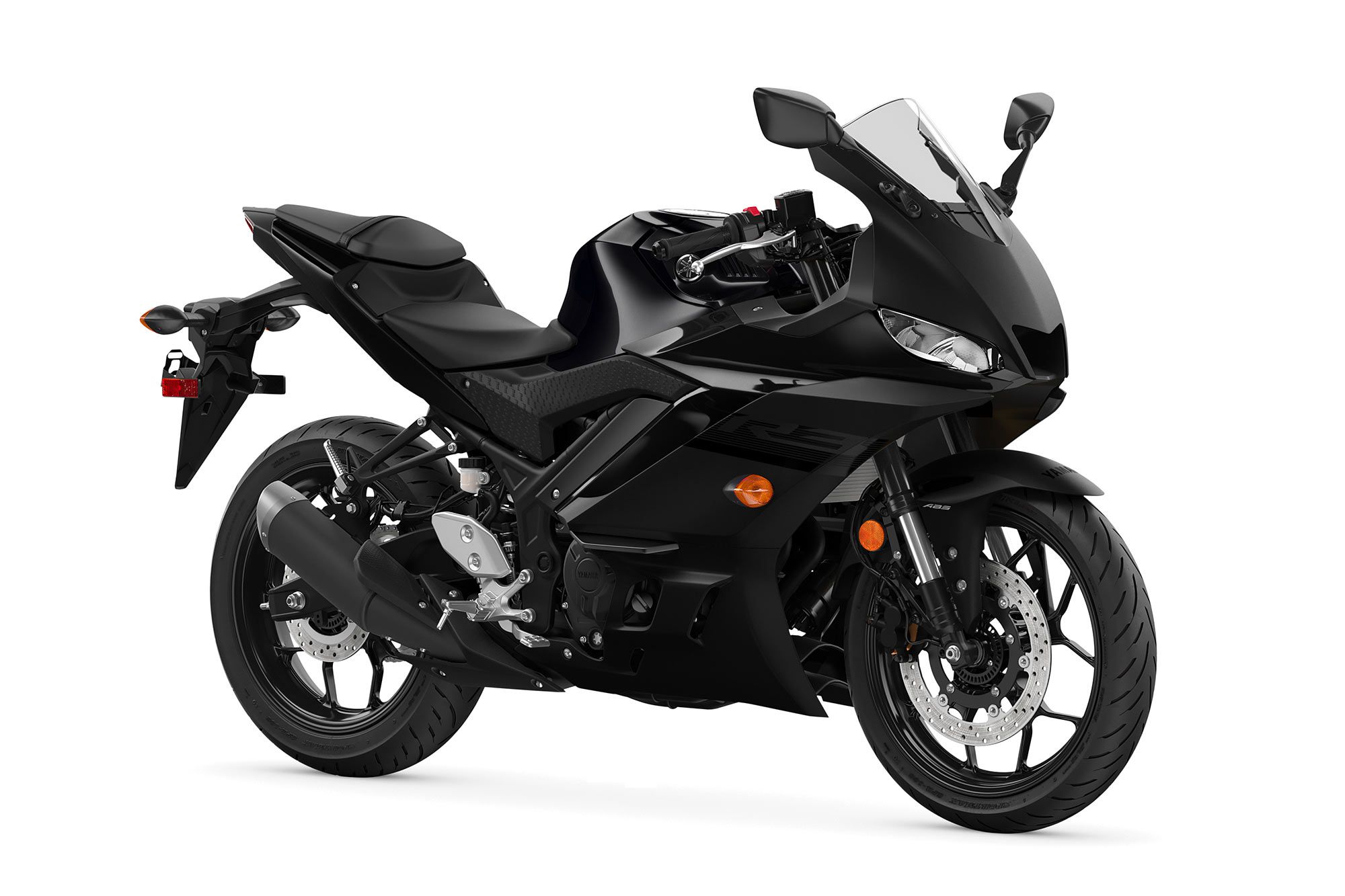
2021 Yamaha YZF-R3 Claimed Specifications
| MSRP: | $5,299/$5,599 (Monster Energy Yamaha MotoGP Edition) |
| Engine: | 321cc, DOHC, liquid-cooled parallel twin; 8 valves |
| Bore x Stroke: | 68.0 x 44.1mm |
| Transmission/Final Drive: | 6-speed/chain |
| Fuel Delivery: | Electronic fuel injection w/ 32mm throttle bodies |
| Clutch: | Wet, multiple disc; cable operation |
| Engine Management/Ignition: | Transistorized ignition w/ electronic advance |
| Frame: | Diamond-type steel-tube chassis |
| Front Suspension: | 37mm Kayaba USD fork, nonadjustable; 5.1 in. travel |
| Rear Suspension: | Kayaba shock, spring preload adjustable; 4.9 in. travel |
| Front Brake: | 2-piston slide-pin caliper, 298mm disc w/ ABS |
| Rear Brake: | 1-piston slide-pin caliper, 220mm disc w/ ABS |
| Wheels, Front/Rear: | Cast aluminum; 17 x 2.75 in. / 17 x 4.50 in. |
| Tires, Front/Rear: | 110/70-17 / 140/70-17 |
| Rake/Trail: | 25.0°/3.7 in. |
| Wheelbase: | 54.3 in. |
| Ground Clearance: | 6.3 in. |
| Seat Height: | 30.7 in. |
| Fuel Capacity: | 3.7 gal. |
| Wet Weight: | 375 lb. |
| Contact: | yamaha-motor.com |
Cycle World Tested Specifications
| Seat Height: | 30.8 in. |
| Wet Weight: | 379 lb. |
| Rear-Wheel Horsepower: | 36.0 hp @ 10,700 rpm |
| Rear-Wheel Torque: | 19.8 lb.-ft. @ 9,000 rpm |
| 0–60 mph: | 5.2 sec. |
| 1/4-mile: | 14.18 sec. @ 92.78 mph |
| Braking 30–0 mph: | 45.0 ft. |
| Braking 60–0 mph: | 165.9 ft. |
Source: MotorCyclistOnline.com
